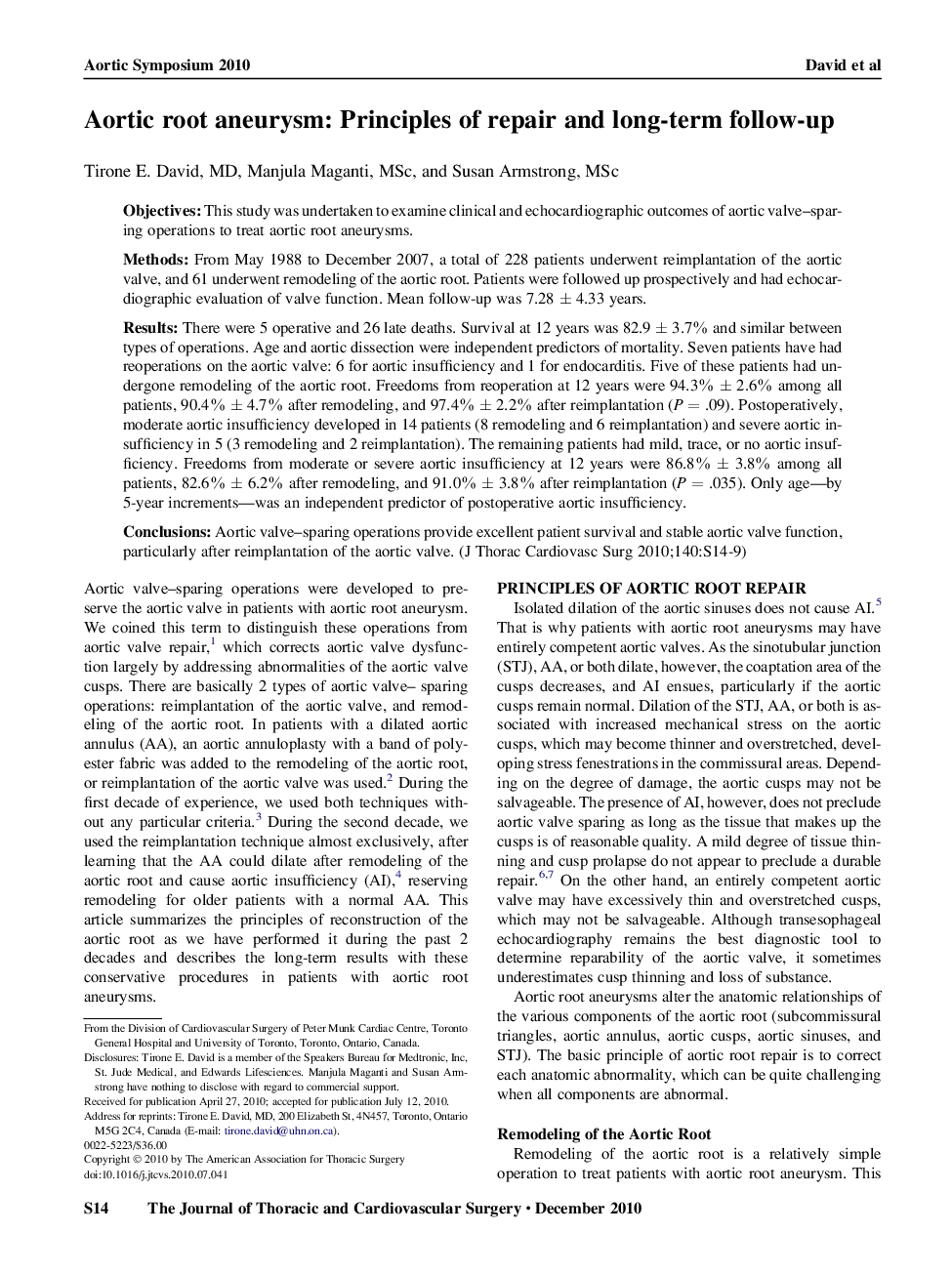| Article ID | Journal | Published Year | Pages | File Type |
|---|---|---|---|---|
| 2983608 | The Journal of Thoracic and Cardiovascular Surgery | 2010 | 6 Pages |
ObjectivesThis study was undertaken to examine clinical and echocardiographic outcomes of aortic valve–sparing operations to treat aortic root aneurysms.MethodsFrom May 1988 to December 2007, a total of 228 patients underwent reimplantation of the aortic valve, and 61 underwent remodeling of the aortic root. Patients were followed up prospectively and had echocardiographic evaluation of valve function. Mean follow-up was 7.28 ± 4.33 years.ResultsThere were 5 operative and 26 late deaths. Survival at 12 years was 82.9 ± 3.7% and similar between types of operations. Age and aortic dissection were independent predictors of mortality. Seven patients have had reoperations on the aortic valve: 6 for aortic insufficiency and 1 for endocarditis. Five of these patients had undergone remodeling of the aortic root. Freedoms from reoperation at 12 years were 94.3% ± 2.6% among all patients, 90.4% ± 4.7% after remodeling, and 97.4% ± 2.2% after reimplantation (P = .09). Postoperatively, moderate aortic insufficiency developed in 14 patients (8 remodeling and 6 reimplantation) and severe aortic insufficiency in 5 (3 remodeling and 2 reimplantation). The remaining patients had mild, trace, or no aortic insufficiency. Freedoms from moderate or severe aortic insufficiency at 12 years were 86.8% ± 3.8% among all patients, 82.6% ± 6.2% after remodeling, and 91.0% ± 3.8% after reimplantation (P = .035). Only age—by 5-year increments—was an independent predictor of postoperative aortic insufficiency.ConclusionsAortic valve–sparing operations provide excellent patient survival and stable aortic valve function, particularly after reimplantation of the aortic valve.
